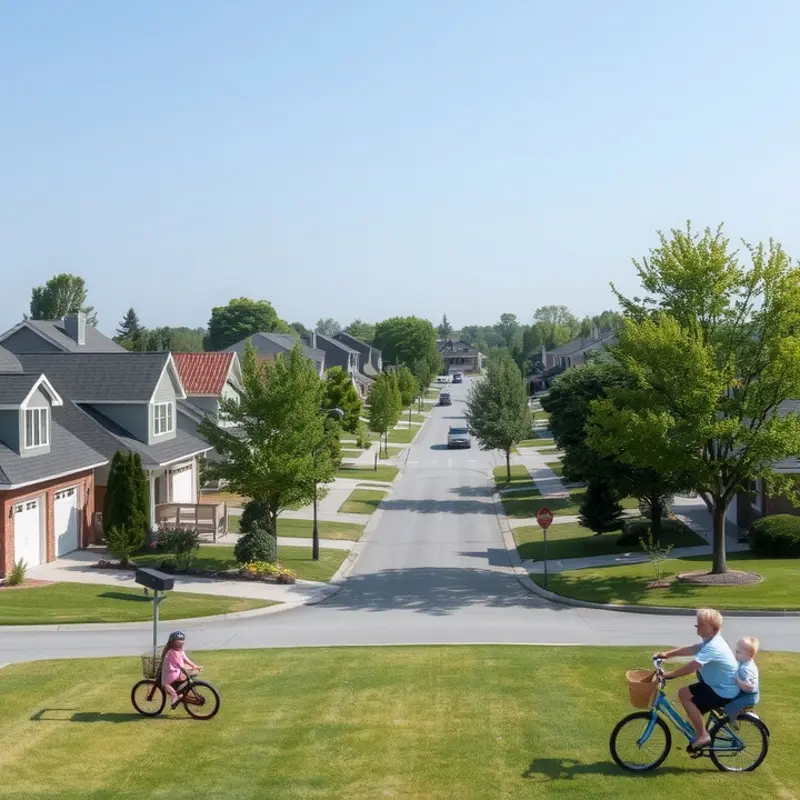Choosing where to rent is an important decision, especially for young adults, first-time renters, and young families ready to start anew. On one hand, cities offer vibrant lifestyles packed with culture, nightlife, and proximity to work. On the other hand, the suburbs promise more space, yard, and that sense of community we all yearn for. With endless options, how do you decide whether to enjoy the hustle and bustle of urban life or to savor the calmer pace of suburban living? The right choice will depend on your lifestyle, preferences, and plans for the future. Let’s discover the pros and cons of both city and suburb renting as we explore how these two distinct living options could shape your day-to-day life.
Urban Vibes: Pros and Cons of City Living

City living offers a unique blend of vibrant culture, convenient amenities, and an endless array of activities. Renting in urban areas means that lively streets connect young professionals to charming cafes, bustling markets, and vibrant nightlife, all just a short walk away. However, the benefits of city life come with their own set of challenges.
Accessibility is one of the most appealing aspects of urban living. Public transportation networks often blanket cities, allowing residents to move efficiently without the need for a car. This accessibility extends beyond transportation; cities are home to diverse eateries, entertainment venues, and shops, making day-to-day tasks seamless.
City amenities can significantly enhance a renter’s quality of life. From modern gyms and rooftop pools to co-working spaces and dog parks, urban housing developments frequently offer a wide range of features designed to entice potential renters. Additionally, cities often host large parks or green spaces, perfect for outdoor enthusiasts or a peaceful escape from the urban hustle.
However, this convenience often comes at a high price. Renting in cities, especially in premium neighborhoods, can result in exorbitant rental costs. Potential renters must weigh the benefits of proximity to amenities with the financial impact of urban living. To help manage finances effectively, consider exploring financial planning for renters which offers practical advice on budgeting and saving.
Safety can be another concern for urban renters. High population density can sometimes correlate with higher crime rates. That said, cities also typically offer a robust police presence and community programs aimed at enhancing neighborhood safety. Prospective renters should research specific neighborhoods, keeping in mind that safety can vary significantly from one area to another.
The buzz of city life itself is both a draw and a drawback. The vibrant energy can be invigorating, offering endless opportunities for socializing, networking, and cultural exposure. Yet, the constant activity may not suit everyone. The noise, pace, and commotion of city living can be overwhelming for those seeking peace and tranquility.
The pros and cons of city living boil down to personal values and lifestyle preferences. Some may thrive amidst the dynamism and opportunity, while others may find the pace too relentless. For those uncertain, experimenting with temporary rental solutions or subletting could provide a taste of urban life without a long-term commitment. In the search for a perfect home, understanding these dynamics can guide renters to a decision that best suits their needs and desires.
Suburban Charm: The Allure of Quiet Living

Living in the suburbs often conjures images of tranquility and spaciousness. With larger homes and expansive backyards, suburban areas provide more room for families to grow and thrive. Unlike urban apartments, suburban rentals generally offer more space both indoors and out. This is especially appealing to those desiring a peaceful environment away from the city’s hustle.
One of the most enticing features of suburban life is the presence of lush green spaces. Community parks offer not only natural beauty but also a place for recreation and relaxation. These parks are perfect settings for morning jogs, weekend family picnics, or simply enjoying a quiet afternoon with a good book. Parents often appreciate how these green sanctuaries offer safe havens for children to play and explore.
Suburbs are also known for their family-friendly amenities. Nearby schools tend to be well-regarded, with a focus on community involvement and educational excellence. For families prioritizing education, this can be a significant factor in choosing suburban life over urban living. Additionally, many suburbs host a variety of family-oriented activities and festivals, fostering a strong sense of community.
Socially, suburban communities shine through their tight-knit neighborhoods. The infamous block party is more than a stereotype—it’s an integral part of suburban culture. These gatherings allow neighbors to connect, share food, and build friendships. The result is a supportive network, where people look out for each other and children form lifelong friendships.
However, moving to the suburbs requires thoughtful consideration of certain factors, such as commute times. While the city offers the convenience of public transportation and short distances to work, suburban residents often face longer commutes. This can mean early mornings and a need for reliable vehicles. Nonetheless, many find the trade-off worth it for the trade of city chaos for suburban peace.
Before settling into a suburban lifestyle, it’s crucial to assess the local vibe. Each suburb has its own unique character and pace. Some are bustling with activities while others provide a slower, more laid-back environment. Potential renters should spend time exploring different neighborhoods to see which aligns with their lifestyle preferences.
In summary, the allure of suburban living is multi-faceted. From spacious rentals and vibrant schools to community-centric activities, it’s an appealing option for those seeking a balanced lifestyle. Whether you’re on the hunt for space, a sense of community, or top-notch amenities, suburban serenity might just be your answer.
For ideas on how to organize your new suburban space, consider checking this resource on tackling organization with baskets.
Final words
Deciding between city and suburb renting isn’t just about where to live—it’s about what kind of lifestyle you want to embrace. City living offers excitement and connectivity, while suburbs provide tranquility and space. Think about your daily routine, like commuting, leisure activities, and what’s important to you in this stage of your life. Whatever you choose, know that you’re not just renting a home; you’re choosing a lifestyle. So, grab a cup of coffee (or three!) and brush up on what resonates with you. Happy hunting!









